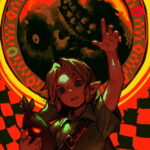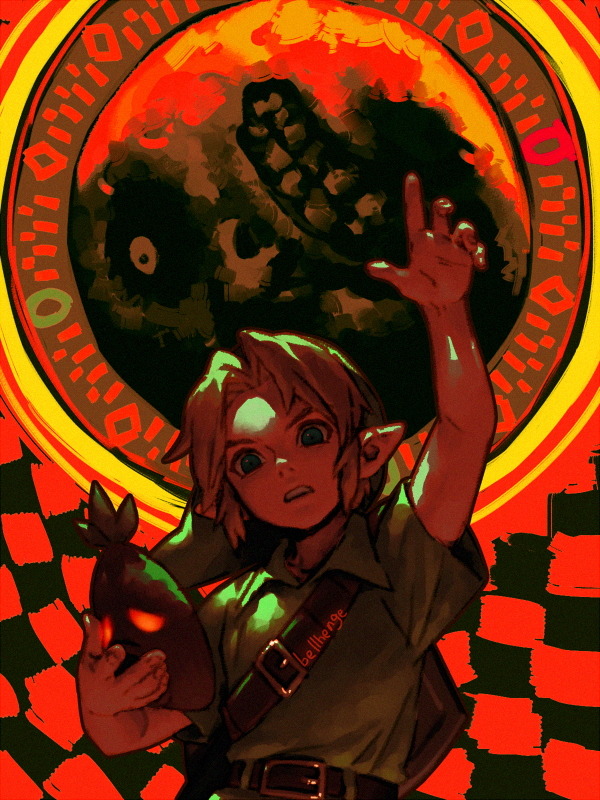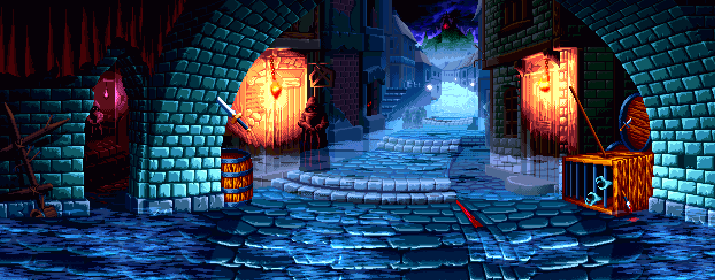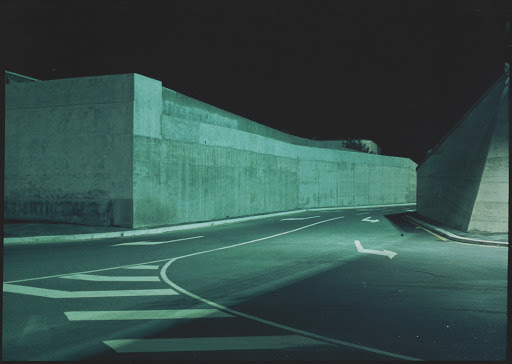MM Link [Zelda: Majora’s Mask] 20th anniv.
Happy 20th Anniversary to The Legend of Zelda: Majora’s Mask!
Month: April 2020
Small innovations in burrito enjoyment
I stole the photo below from the Yelp page for Sanchez Taqueria in Tigard, OR. It’s a good example of the layout for the tables at Sanchez.

But let’s enhance.

They are all equipped with the same set of green salsa (mild), red salsa (hot and smoky), chili oil (haven’t tried it), and napkins.
Those salsa bottles are designed to last. It is the perfect size for my style of burrito enjoyment in which I take a bite, pour on a little salsa, take a bite, more salsa, etc. This enhances the burrito to far greater heights. I used to loathe hot salsas for reasons I cannot fathom but somehow I realized, yes, every bite of a burrito is far better with salsa in the mix. So I have to lament when I visit many taquerias and see that their salsa options come in limited quantities, often in those little two-inch high containers. I imagine cost is a factor, the fear that salsa jerks will use too much. But it’s a small feature that makes a big impact.
So please, restaurants, hook it up with the salsa. Invest in happiness.
Another well-established innovation that I think is sorely underutilized in the taqueria industry is the drive-through. I like the ambiance in a taqueria as much as anyone. ‘Bidibidi bombom’ is fine musical accompaniment for a meal. But sometimes it’s just necessary to pick up a quick bite via car window. To this day, the only taqueria I know with a drive-through is El Faro in South San Francisco.

I was just there yesterday, in fact. I ordered their breakfast burrito. Everyone wore masks and gloves, as one does during a pandemic, and then I ate a good lunch. The drive-through enabled that bit of happiness in troubled times.

The salsas from the restaurant were limited but one prepares for such eventualities.
Stay safe out there. Remember that burritos come wrapped in easily disinfected aluminum foil and your local spots could use the support. Many are available on delivery services such as DoorDash (tip your driver very, very well). A burrito is also a good meal to take on a walk to someplace where you can maintain 6 feet of distance from everyone else. We should live cautiously but not in fear.
QuickBites: The Mission Burrito
The only government propaganda I can get behind.
“I love avocado. My dog’s name is Avocado.”
New Fiction 2020 – March
Hogs of War dev. Infogrames Sheffield House (2000)
I played this game once, long ago, and have never forgotten it. It’s a strange experience. Do I like this game that I played briefly twenty years ago? I remembered it enough to buy a physical copy and store it on a shelf. And when I discovered I could buy a digital copy, I bought it again and finally attempted to complete it during my flights to and from Boston in February. It was too difficult, so I tried and failed again. Finally, I played an emulated copy using cheats to give myself an unlimited number of promotion points and upgrade my soldiers. I completed the game. I remain fascinated with this strange, problematic game. The gameplay is best described as Worms in 3D, but more fun than the actual attempts to make Worms in 3D. The movement is faster, and the reactive physics are key to making this a unique experience compared to other turn-based combat games. The problematic part is the comedy derived from the stereotypical depictions of anthropomorphized pig soldiers who hail from fictionalized versions of nationalities such as Japanese, French, and American. The accents in particular are… tough to get over. It’s a shame, because otherwise, the game is fun, a proper challenge, and should have been more popular than it was.
MASSIVE CHALICE dev. Double Fine Productions (2015)
I didn’t get to work on this one. I’ve worked on almost everything at Double Fine, but 2015 was a turbulent year and I left without making a mark on this release. It remained one of our few games that I hadn’t completed until last month. Having played Hogs of War, I felt encouraged to make the journey through the game and continue exploring turn-based combat. MASSIVE CHALICE is closer to XCOM than Hogs. Movement isn’t in real-time as in Hogs, but limited to moving along a certain numbers of spaces on a grid. It’s structured more like a board game. This means that the game is as it’s best when tension is high because strategy demands patience and some battles are won by the skin of one’s teeth. The player must build up generations of soldiers, choosing who fights and who helps the war machine in other areas. The elements are generated differently each time, resulting in random soldiers being born and raised, as well as random enemy and story encounters. It results in a unique story with the same conclusion every time. My playthrough was fraught with close calls and though I failed the final mission, it didn’t feel like a Game Over. I got a finale cutscene and a satisfying conclusion.
“Playdate with Destiny” dir. David Silverman (2020)
Maggie is the most neglected character on The Simpsons, and it’s always nice to see her get some attention. This animated short was a perfect example of showing instead of telling, which was a perfect challenge for an animation director. Without the need of dialogue the show typically employs, the short is free to show a sweet tale that has its funny moments.
Onward dir. Dan Scanlon (2020)
This story wasn’t quite what I expected, and the marketing certainly sets up an expectation that the creators subvert. It outlines a process in which one deals with loss by yearning for that which was lost, but failing to see what’s still here. The lesson is there as it is with all Pixar films. It hit me particularly hard as I consider my relationships to family.
The Invisible Man dir. Leigh Whannell (2020)
My expectation here was quite low. It’s a horror movie, or maybe a thriller, but I couldn’t understand the kind of terror an invisible person can inflict. The creators did a good job of demonstrating that not only is it a terrifying prospect, but technology can be contorted to reflect the worst of our instinctis.
Bloodshot dir. David S. F. Wilson (2020)
For a movie with as interesting a premise as ‘this guy can’t die,’ it sure was boring. Like the movie above, the creator of this technology is a sociopath, but his intentions are even more flimsy and realistic. He wants to get paid. Vin Diesel’s anti-hero is just as dull as his other roles. It’s worth a lazy Saturday afternoon watch at best.
The Hunt dir. Craig Zobel (2020)
I can see that they were going for some kinda commentary on liberalism in the time of Trump here, but boy does it fall flat. In spite of that, Betty Gilpin is fun to watch in the lead role. A lot of her performance is in the dips between her lines. Her looks at other characters and sort of lanky disarming of the tension. The violence is in the absurd realm of movies like those from Tarantino. I’d watch this again just for her performance.
Star Trek: Picard – Season 1 (2020)
Picard is a legend of a character, and it was nice to see him in action again. However, it’s a bit of a shock to see him and the characters from the Star Trek shows in the eighties and nineties commingling in this post-Abrams Star Trek universe. I watched the season with friends and reviews were mixed. For those who did like it, we thought it really needed more than ten episodes in a season to tell its story. Now that I’m watching Star Trek: Discovery, I can see that play out. There’s more room to breathe with fifteen episodes in their seasons. Picard has room for improvement and with another season guaranteed, I’m hoping they stabilize and add more room for their stories.
New Fiction 2020 – March
Hogs of War dev. Infogrames Sheffield House (2000)
I played this game once, long ago, and have never forgotten it. It’s a strange experience. Do I like this game that I played briefly twenty years ago? I remembered it enough to buy a physical copy and store it on a shelf. And when I discovered I could buy a digital copy, I bought it again and finally attempted to complete it during my flights to and from Boston in February. It was too difficult, so I tried and failed again. Finally, I played an emulated copy using cheats to give myself an unlimited number of promotion points and upgrade my soldiers. I completed the game. I remain fascinated with this strange, problematic game. The gameplay is best described as Worms in 3D, but more fun than the actual attempts to make Worms in 3D. The movement is faster, and the reactive physics are key to making this a unique experience compared to other turn-based combat games. The problematic part is the comedy derived from the stereotypical depictions of anthropomorphized pig soldiers who hail from fictionalized versions of nationalities such as Japanese, French, and American. The accents in particular are… tough to get over. It’s a shame, because otherwise, the game is fun, a proper challenge, and should have been more popular than it was.
MASSIVE CHALICE dev. Double Fine Productions (2015)
I didn’t get to work on this one. I’ve worked on almost everything at Double Fine, but 2015 was a turbulent year and I left without making a mark on this release. It remained one of our few games that I hadn’t completed until last month. Having played Hogs of War, I felt encouraged to make the journey through the game and continue exploring turn-based combat. MASSIVE CHALICE is closer to XCOM than Hogs. Movement isn’t in real-time as in Hogs, but limited to moving along a certain numbers of spaces on a grid. It’s structured more like a board game. This means that the game is as it’s best when tension is high because strategy demands patience and some battles are won by the skin of one’s teeth. The player must build up generations of soldiers, choosing who fights and who helps the war machine in other areas. The elements are generated differently each time, resulting in random soldiers being born and raised, as well as random enemy and story encounters. It results in a unique story with the same conclusion every time. My playthrough was fraught with close calls and though I failed the final mission, it didn’t feel like a Game Over. I got a finale cutscene and a satisfying conclusion.
“Playdate with Destiny” dir. David Silverman (2020)
Maggie is the most neglected character on The Simpsons, and it’s always nice to see her get some attention. This animated short was a perfect example of showing instead of telling, which was a perfect challenge for an animation director. Without the need of dialogue the show typically employs, the short is free to show a sweet tale that has its funny moments.
Onward dir. Dan Scanlon (2020)
This story wasn’t quite what I expected, and the marketing certainly sets up an expectation that the creators subvert. It outlines a process in which one deals with loss by yearning for that which was lost, but failing to see what’s still here. The lesson is there as it is with all Pixar films. It hit me particularly hard as I consider my relationships to family.
The Invisible Man dir. Leigh Whannell (2020)
My expectation here was quite low. It’s a horror movie, or maybe a thriller, but I couldn’t understand the kind of terror an invisible person can inflict. The creators did a good job of demonstrating that not only is it a terrifying prospect, but technology can be contorted to reflect the worst of our instinctis.
Bloodshot dir. David S. F. Wilson (2020)
For a movie with as interesting a premise as ‘this guy can’t die,’ it sure was boring. Like the movie above, the creator of this technology is a sociopath, but his intentions are even more flimsy and realistic. He wants to get paid. Vin Diesel’s anti-hero is just as dull as his other roles. It’s worth a lazy Saturday afternoon watch at best.
The Hunt dir. Craig Zobel (2020)
I can see that they were going for some kinda commentary on liberalism in the time of Trump here, but boy does it fall flat. In spite of that, Betty Gilpin is fun to watch in the lead role. A lot of her performance is in the dips between her lines. Her looks at other characters and sort of lanky disarming of the tension. The violence is in the absurd realm of movies like those from Tarantino. I’d watch this again just for her performance.
Star Trek: Picard – Season 1 (2020)
Picard is a legend of a character, and it was nice to see him in action again. However, it’s a bit of a shock to see him and the characters from the Star Trek shows in the eighties and nineties commingling in this post-Abrams Star Trek universe. I watched the season with friends and reviews were mixed. For those who did like it, we thought it really needed more than ten episodes in a season to tell its story. Now that I’m watching Star Trek: Discovery, I can see that play out. There’s more room to breathe with fifteen episodes in their seasons. Picard has room for improvement and with another season guaranteed, I’m hoping they stabilize and add more room for their stories.
“Dark World” from World Heroes Perfect
“Dark World” from World Heroes Perfect
Route et carrefour, 1977. Photo by Daniel Boudinet.




